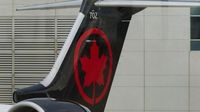It has been a turbulent week for Air Canada, its flight attendants, and the hundreds of thousands of travelers caught in the crossfire of a high-stakes labor dispute that briefly grounded much of the nation’s largest airline. Now, as the dust settles, a tentative deal has been struck—though not before a dramatic showdown involving strikes, government intervention, and a fierce debate over the value of airline workers’ time both in the air and on the ground.
On August 19, 2025, Air Canada and the union representing more than 10,000 flight attendants announced a breakthrough: a tentative agreement that, if ratified, would end a strike that had disrupted travel for half a million people worldwide. The walkout, which began just after midnight on Saturday, August 16, was sparked by long-simmering frustrations over stagnant wages and the contentious issue of unpaid work during ground time—moments when flight attendants are required to be on duty but, until now, were not compensated.
The strike’s impact was immediate and widespread, with flights canceled and passengers scrambling to rebook or seek alternatives. According to National Post, Air Canada’s operations ground to a near halt, and the company’s online dashboard showed a dramatic drop in scheduled flights. The union, the Air Canada component of the Canadian Union of Public Employees (CUPE), was resolute. "There’s no limit. We’re going to stay strong. We’re going to stay committed to making sure those workers can do the job they love doing and be able to afford a roof over their heads, to afford caring for their families," said union leader Mark Hancock, as quoted by Travel Radar. "And if it means folks like me going to jail, then so be it."
The government wasted no time stepping in. Less than 12 hours after the strike began, federal labor minister Patty Hajdu invoked Section 107 of the Canada Labour Code, forcing both sides into binding arbitration. The Canada Industrial Relations Board ordered flight attendants back to work on Sunday, August 17. However, the union initially defied the order, pressing ahead with the strike even as the board declared it unlawful. Negotiations resumed late Monday, culminating in the overnight agreement that was announced Tuesday morning.
The terms of the tentative deal, shared on the union’s website and reported by National Post, offer significant wage increases and, crucially, establish a new pay structure for ground time. Most junior flight attendants would see a 12 percent salary increase this year, while more senior members are set for an eight percent raise. All members will receive a three percent raise in 2026, followed by 2.5 percent in 2027, and 2.75 percent in 2028. The agreement, if ratified, would run until March 2029.
But perhaps the most groundbreaking aspect is how the deal addresses the issue of unpaid work. Under the proposed terms, flight attendants would receive half their hourly wage rate for the first 60 minutes of ground time on narrow-body aircraft and 70 minutes on wide-body planes, starting immediately. That ground pay will rise to 60 percent of the hourly wage in April 2026, 65 percent in 2027, and 70 percent in 2028. The union hailed this as a major victory, declaring, "Unpaid work is over." As union officials stated, "When our rights were taken away, we stood strong, we fought back – and we secured a tentative agreement that our members can vote on."
Notably, while the entire agreement is subject to a membership vote scheduled from August 27 to September 6, some terms—such as those setting out rules for pensions, retirement bridging, health benefits, prone rest, vacation, and ground pay—are already considered final, regardless of the vote’s outcome. If the deal is rejected, only the wages portion would proceed to arbitration, with a third-party arbitrator making a binding decision.
For travelers, the end of the strike brought a sigh of relief, though not without lingering headaches. Air Canada announced that it expected most domestic and international flights to resume by Thursday, August 21, with 98 percent of domestic and 99 percent of U.S. flights expected to operate. International service, which took a bigger hit due to crews being out of position overseas, was expected to take up to 10 days to return to normal levels across Air Canada and its Rouge subsidiary, as reported by National Post. Mark Nasr, Air Canada’s chief operations officer, explained that the process of ramping up international flights was slowed because crews had been brought home before the strike, leaving them unable to staff return flights abroad immediately.
To address the disruption, Air Canada introduced an Exceptional Disruption Policy, offering full refunds or credits for travelers whose flights were canceled between August 15 and August 23. The airline also committed to reimbursing customers who booked alternative transportation during the strike. Travelers were advised to only head to the airport if their bookings were confirmed, as the airline worked to clear the backlog and restore regular service.
The government’s intervention in the dispute was not without controversy. Some observers argued that invoking Section 107 and compelling binding arbitration set a worrying precedent for labor relations in Canada’s federally regulated industries. Critics questioned whether the move undermined the right to strike and tilted the balance of power in favor of employers. Others, however, pointed out that the scale of disruption—half a million travelers stranded and a vital national carrier sidelined—demanded swift action to protect the broader public interest.
For the union, the outcome was bittersweet. While leaders celebrated the gains made on wages and ground pay, the government’s swift intervention and the subsequent arbitration order left some members feeling their leverage had been blunted. Yet, as the union’s statement on its website made clear, there was a sense of hard-won achievement: "We have a tentative agreement we will bring forward to you. We are required to advise our membership that we must fully cooperate with the resumption of operations."
As the ratification vote approaches, all eyes are on Air Canada’s flight attendants. If members approve the deal, it will mark the end of a contentious chapter in the airline’s labor history and set a new standard for compensation in the industry. If not, the unresolved wage component will head to arbitration, but the landmark provisions on ground pay and other benefits will still stand.
In the meantime, Air Canada passengers can look forward to the gradual return of normalcy in the skies. For the flight attendants who kept up the fight, the deal represents a significant step toward fairer treatment—and a reminder that, sometimes, standing together really does make a difference.

